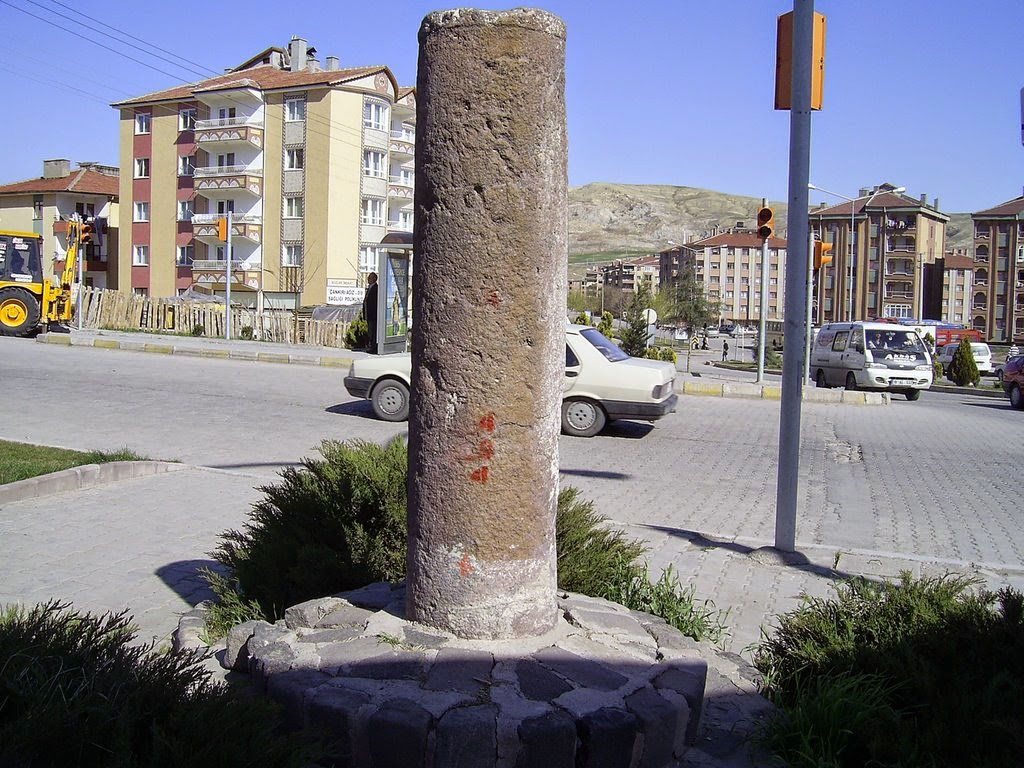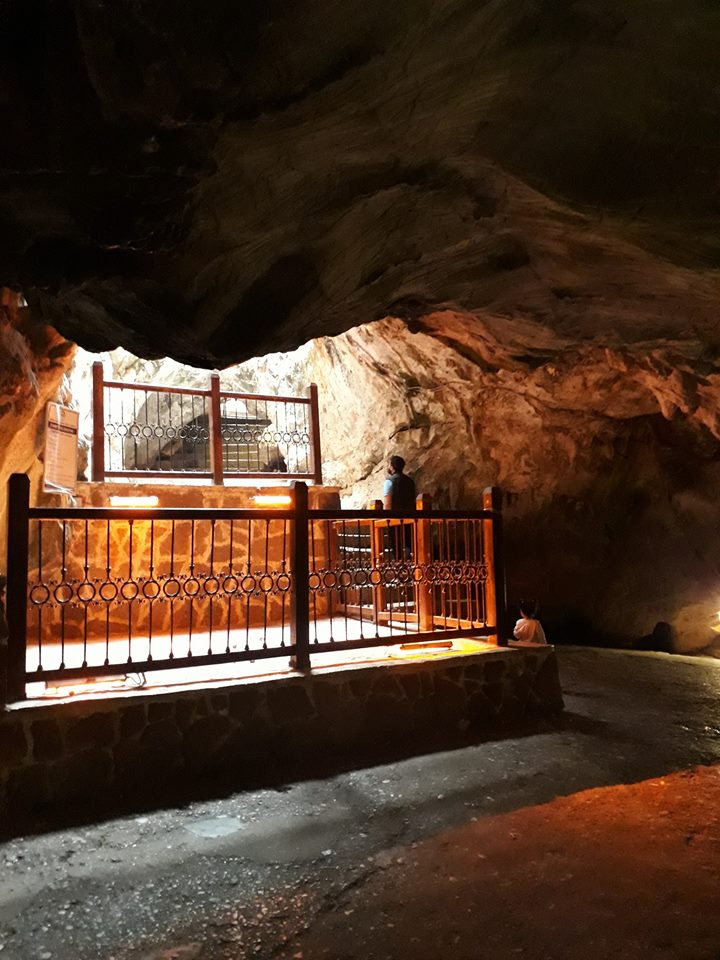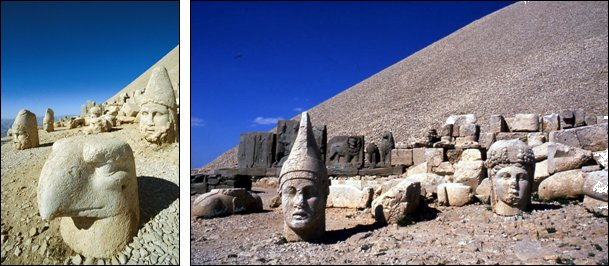The stone cult, one of the common belief systems of various cultures throughout history in Anatolia, encompasses religious and ritual practices directed towards sacred rocks. Wish stones, votive rocks, holed stones, standing stones, and natural rock formations are concrete manifestations of this belief system. This cult, reaching from ancient times to the present day, continues to exist as part of both pagan-era practices and post-Islamic folk beliefs. Archaeological findings, folk narratives, and field studies indicate that stones are associated with sacredness in many regions of Anatolia.
Historical Background
The sacredness attributed to stones dates back to the Neolithic Age in Anatolia. The central role of monoliths in archaeological sites like Göbekli Tepe demonstrates the stone's function as an object of worship. During the Hittite period, sacred rock worship, supported by rock monuments and hieroglyphic inscriptions, revealed the importance of the stone within the state religion. In the Hellenistic and Roman periods, rock formations around nymphaeums (sacred fountains) were combined with water and nature cults and transformed into sacred areas.
In the Middle Ages, influenced by Christianity, this form of belief continued with rock structures around churches and monasteries; with the process of Islamization, the stone cult was reshaped among the populace as a practice of wishes and vows.
Wish Stones and Votive Practices
Today, in various regions of Anatolia, especially in rural settlements, practices such as tying rags, pouring water, lighting candles, and leaving money are observed on stones known by names like “wish stone,” “votive rock,” “holed stone,” and “milk rock.” Most of these stones are natural formations; however, some have been shaped by human hands and formed according to specific sacred rituals. Prayers directed towards stones generally focus on wish themes such as health, having children, marriage, and requesting rain.
The “wish rocks” found in the Aegean Region, the “holed stones” in Central Anatolia, and the “evil eye rocks” in Eastern Anatolia reflect the regional diversity of this practice. The votive stone tradition has sometimes been continued near mosques or tombs, thereby gaining a syncretic structure with Islamic belief.
Sacred Rock Forms and Symbols
Stones considered sacred are usually found in their natural form or carved. Hollows, grooves, hand-foot prints, phallic symbols, round pits, and scratch marks are the most commonly encountered symbols. Some of these symbols carry meanings of fertility, protection, procreation, and divine contact. Particularly phallus-like stones have been associated with fertility since prehistoric times; this tradition has been kept alive in many regions of Anatolia through "child-wishing" rituals.
In some regions, it is believed that stones “sweat,” “drip milk,” or “speak,” and these supernatural qualities are transmitted among the populace as narratives enhancing the stone's sacredness.
Cultural and Religious Syncretism
The stone cult in Anatolia has been shaped by the integration of ancient beliefs into pre- and post-Islamic folk practices. For example, rituals directed at stones once offered as vows to God or goddesses have, over time, continued to exist through Islamic naming, with appellations such as “saint's stone,” “ancestor's stone,” and “wali's rock.” During this process, practices involving stones gained a mystical meaning, also influenced by folk Sufism.
Among the populace, perceptions have formed that stones are alive and possess will, with expressions such as “if no intention is made to the stone, it gets offended” and “the stone holds prayers.” Such beliefs are also associated with Shamanistic traditions; it is particularly thought to bear traces of Central Asian Turkic culture.
Modern Interpretations and Folklore Studies
Folklore studies reveal that the stone cult is not merely a past form of belief but also a living element of modern folk culture. Ethnographic field research has shown that these stones are particularly visited by women and the elderly, and in some regions, these visits are made collectively and on specific days.
The stone cult is also considered part of cultural heritage. In Turkey, some sacred stones have been included in the local cultural inventory, while others have been placed under protection. However, sufficient scientific documentation and promotional efforts in these areas are still limited.
Example Sites
Embrace Stone (Çankırı Central)
In the city center of Çankırı, a natural rock formation known among the populace as the “Embrace Stone” is regarded as a wish stone in local folk belief. It is reported that the stone, particularly visited by young women and couples, is used for making wishes related to good fortune and marriage by walking around it or touching it. The stone's natural form, suitable for embracing, is symbolically associated with images of protection and acceptance. According to local folk narratives, prayers are offered around this stone, and threads are tied to ward off the evil eye. Although academic studies concerning the area where the stone is located are limited, the stone holds a strong symbolic meaning in local folk culture.

Çankırı Embrace Stone (Photo: Metin Dağ)
Ashab-ı Kehf Cave Stone (Tarsus, Mersin)
A large stone block located at the entrance of the Ashab-ı Kehf Cave in Tarsus is one of the elements considered sacred by the local populace. According to legend, it is believed that the prayers of visitors who touch the stone before entering the cave will be accepted. Some narratives state that the stone bears the mark of the Seven Sleepers or protects the cave. The increased visitor traffic, especially during religious holidays, has led to the stone being perceived as a cultural pilgrimage object. The region has also been designated as a pilgrimage site by the Presidency of Religious Affairs, and the stone cult is seen as an element that has maintained continuity in both pre- and post-Islamic contexts.

Ashab-ı Kehf Cave (Tarsus District Governorship)
Mount Nemrut Sacred Stone Rows (Adıyaman)
The statues and stone rows located on Mount Nemrut date back to the Kingdom of Commagene period and are notable as cult stones. The colossal stone heads and altars located here are associated with offerings to gods and ceremonial areas. Especially the stela-shaped stones on the eastern terrace mark ritual areas linked to celestial events. This situation indicates that the stones contain not only architectural but also cosmic and religious representations.

Mount Nemrut (Adıyaman MoCT)
Case Studies
Preservation of Local Beliefs through the Embrace Stone
Interview and oral history studies conducted around this stone, widely known among the public in Çankırı, show that stone-centered belief systems in Anatolia are still active. Local people visit this stone to experience spiritual satisfaction, connect with the past, and maintain their traditional beliefs. Stories told about whether wishes came true have led to the formation of a collective memory around the stone. Rather than modern scientific explanations, local oral culture plays a decisive role here.
Ritual Behaviors Towards the Stone in Ashab-ı Kehf Cave
Visitors to the Ashab-ı Kehf Cave in Tarsus have been observed going to the stone's side to pray, rub their hands on the stone, or tie rags around it. These behaviors are based on the popular belief that direct contact with the stone will activate sacred power. The prominence of the stone within an Islamic framework demonstrates how the stone cult has been integrated into new belief systems.
Stone Rows and Celestial Symbols on Mount Nemrut
This site, located on the UNESCO World Heritage list, reveals a state-sanctioned and institutionalized version of the stone cult. Monumental stones dedicated to the royal family were placed in harmony with the cosmic order, creating a religious impact on the populace. This example demonstrates that stones are associated not only with individual beliefs but also with political authority and divine legitimacy.
Visual Use and Conservation Issues
Sites related to the stone cult are places where religious practices continue and have become part of cultural tourism today. However, many of these structures are damaged due to treasure hunting, vandalism, and natural erosion. A large portion of sacred stones without official protection status are left to the initiative of the public. Visual documentation and digital archiving efforts are still limited, and work is ongoing for the systematic protection of these cultural assets.
Historical and Cultural Significance
The stone cult is a multi-layered belief system representing the cultural continuity of Anatolia. The symbolic relationship established with nature has been sanctified through stones; people have connected with metaphysical powers through these sacred objects. Both archaeological, ethnographic, and folkloric documents show that this belief still exists in many communities.

